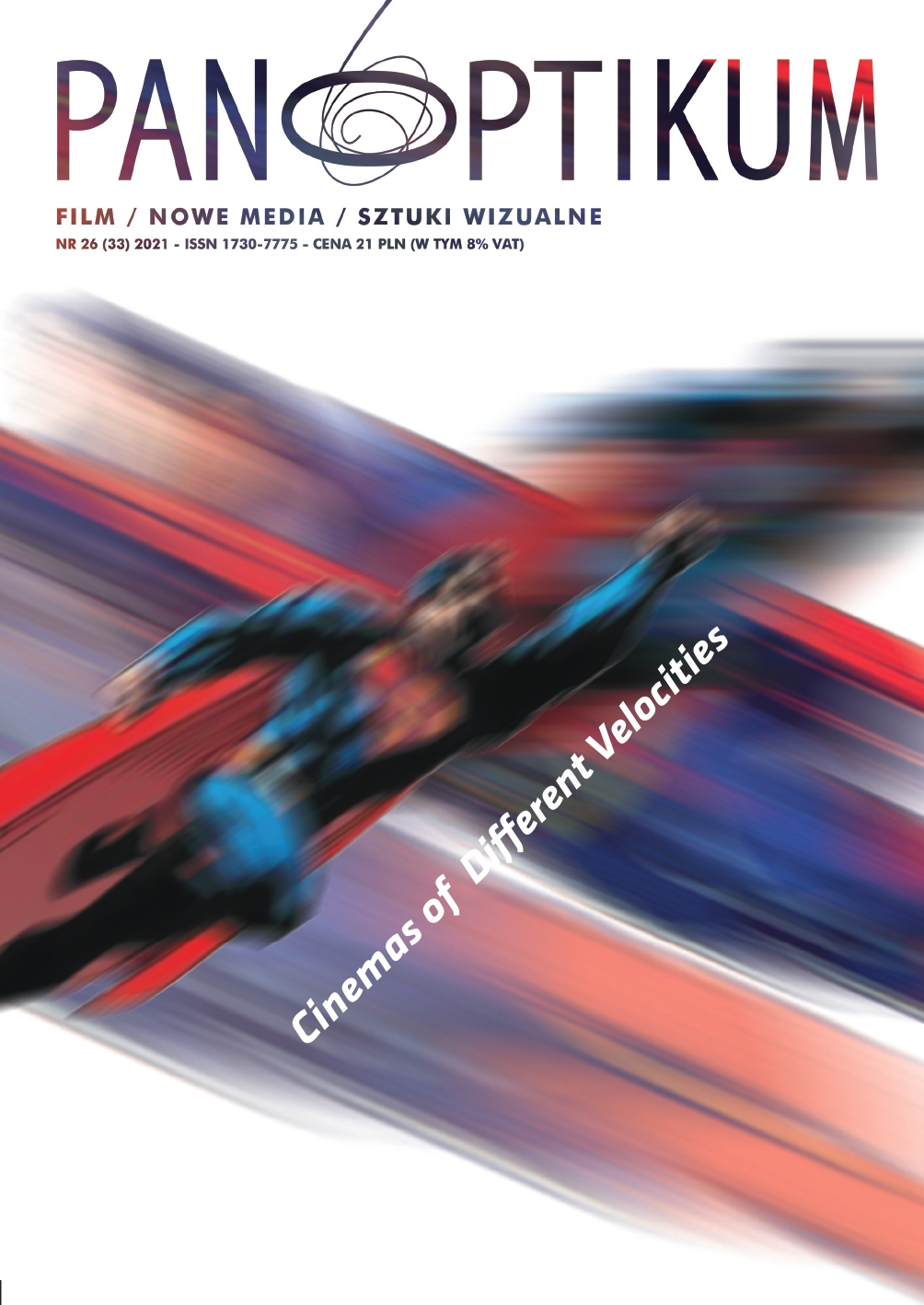Revisiting Videogame Logic: Impossible Storyworlds in the Contemporary Hollywood Blockbuster
DOI:
https://doi.org/10.26881/pan.2021.26.07Keywords:
storyworld, blockbuster, Christopher Nolan, Duncan Jones, narrative theory, videogamesAbstract
This paper demonstrates how two logics (narrative and videogame) function in a select number of contemporary blockbuster films. The paper is divided into three sections: The first outlines narrative and videogame logics; the second presents examples from Inception (Christopher Nolan, 2010) and Source Code (Duncan Jones, 2011) to demonstrate how videogame logic structures the events in each film; and the third discusses how these logics create specific storyworlds (imaginary worlds distinct from the actual world) that are unnatural and/or impossible.
Downloads
References
Adams, E., Rollings, A. (2007). Fundamentals of Game Design. New Jersey: Pearson.
Alber, J. (2009). Impossible Storyworlds – and What to Do with Them. “StoryWorlds: A Journal of Narrative Studies” no. 1.
Buckland, W. (1999). Between Science Fact and Science Fiction: Spielberg’s Digital Dinosaurs, Possible Worlds, and the New Aesthetic Realism. “Screen” 40, 2 (Summer).
Buckland, W. (2002). S/Z, the “Readerly” Film, and Video Game Logic (The Fifth Element). In Elsaesser, T., Buckland, W. Studying Contemporary American Film: A Guide to Movie Analysis. London: Arnold.
Buckland, W. (2006). Directed by Steven Spielberg: Poetics of the Contemporary Hollywood Blockbuster. New York: Continuum.
Buckland, W. (2014). Source Code’s Videogame Logic’. In Hollywood Puzzle Films, Buckland, W. (ed.). New York: Routledge.
Buckland, W. (2015). Inception’s Videogame Logic. In The Cinema of Christopher Nolan, Furby, J., Joy, J. London: Wallflower Press.
Buckland, W. (2018). The Unnatural and Impossible Storyworlds of Michel Gondry’s Music Videos: The Mise en Abyme of Bachelorette, “Volume!”, 14:2. http://journals.openedition. org/volume/5689 ; DOI : 10.4000/volume.5689.
Eichenbaum, B. (1965). The Theory of the “Formal Method”. In Russian Formalist Criticism: Four Essays.
Lemon, L. T., Reis, M. J., Lincoln: University of Nebraska Press.
Elsaesser, T. (2014). Philip K. Dick, the Mind-Game Film, and Retroactive Causality. In Hollywood Puzzle Films, Buckland, W. (ed.), New York: Routledge.
Fiske, J. (1989). Reading the Popular. London: Routledge.
Garroni, E. (1968). Semiotica ed estetica. L’eterogeneità del linguaggio e il linguaggio cinematografico. Bari: Laterza.
Gottschalk, S. (1995). Videology: Video-Games as Postmodern Sites/Sights of Ideological Reproduction. “Symbolic Interaction”, 18, 1.
Iversen, S. (2012). Unnatural Minds. In A Poetics of Unnatural Narrative, edited by Henrik Skov Nielsen, H. S., Alber, J., Richardson, B. (eds.). Columbus, Ohio: Ohio State University Press.
Juul, J. (2005). Half-Real: Video Games between Real Rules and Fictional Worlds. Cambridge, MA: MIT Press.
Kiss, M., Willemsen, S. (2017). Impossible Puzzle Films: A Cognitive Approach to Contemporary Complex Cinema. Edinburgh: Edinburgh University Press.
Laure-Ryan, M. (1991). Possible Worlds, Artificial Intelligence, and Narrative Theory. Indiana: Indiana University Press.
Manovich, L. (2001). The Language of New Media. Cambridge, Mass.: MIT Press.
Manovich, L. (2013). Software Takes Command. New York: Bloomsbury.
McHale, B. (1987). Postmodernist Fiction. London: Routledge.
Metz, Ch. (1974). Language and Cinema. The Hague: Mouton.
Parlett, David. 2005. ‘Rules OK, or Hoyle on Troubled Waters’: http://www.davpar.com/ gamester/rulesOK.html.
Richardson, B. (2015). Unnatural Narrative: Theory, History, and Practice. Columbus: Ohio State University Press.
Wolf, M. (2012). Building Imaginary Worlds: The Theory and History of Subcreation. New York: Routledge.

 Academic Scientific Journals
Academic Scientific Journals









